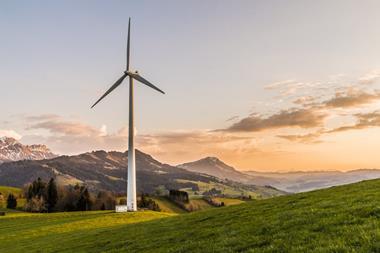When it comes to natural resources and investment, most people think of commodities such as oil, gas, copper and gold. But thanks to climate change, another resource has recently been put in the spotlight - water.
Indeed, climate change is one of the global trends identified in a macro study by the Swiss-based Sustainable Asset Management (SAM). It is causing heightened demand for water-related products and services because it is changing rainfall patterns and increasing water shortages. Demographic changes such as population growth, urbanisation and industrialisation are also taking their toll, as are ageing infrastructures in the UK and US and water quality in emerging markets.
These growth opportunities were the drivers behind the water funds launched by Pictet AM and SAM in 2000 and 2001 respectively, which are both open to retail and institutional investors.
Pictet's water fund manager Louis-Mathieu Perrin also attributes the rising interest in water investments to stricter environmental regulations in Europe and the US and the preference for privatisation by municipalities or states with economic difficulties.
SAM's senior portfolio manager Dieter Kueffer sees an increasing amount of institutional investors allocating to its open-ended Luxembourg SICAV water fund, which was initially the domain of private investors.
Kueffer says: "Around €210m of our €1.6bn water fund is in the institutional tranche. Pension funds mainly use the fund as a satellite product and are attracted by its great returns. The fund has gained above 10% per annum after all costs, outperforming the 3.7% gain of the MSCI World Index - which we use as a benchmark - in the same period. Because it is an equity-long rather than an absolute return product, our goal is to outperform the MSCI World Index. We expect that will lead to a long-term average return of 8-10% per annum."
Low volatility - with the beta having been at 0.7 since inception - and a correlation of around 70% over the past five years as well as a co-efficient determination of 0.66 - also make the water fund a good diversification tool for equities, according to Kueffer.
Pictet's Luxembourg-registered fund grew from €1bn at the beginning of 2006 to €4bn by the end of February 2007, which led to the fund's subclosure. Nominalised returns were at around 7% for the last five years.
Perrin says: "Following the negative returns of 2002 and 2003, returns were close to 20% over the last three years. This year has so far shown an 8% return. Our view is that as the water sector grows at around 8% per year, the return should fundamentally be around 8-10%."
The large majority of water funds is invested in European and US-based companies that benefit from the global trends and challenges in the value chain of water, as well as from the growth opportunities in China and India. Direct emerging markets exposure represents only a minority.
Pictet's water fund invests in four different sectors, with 35% going into water utilities, 40% into water technology - mainly small cap US-based companies that produce water treatment solutions - 15% into wastewater management and 10% into packaged water companies.
"Utilities have had a significant run in the past three years," says Perrin. "But feed prices for utilities are on the increase and contracts are being renegotiated. We now see the upside in water technology and that is why we re-balanced the fund over the past few months from a previous 40% utility exposure to the current 35%, while increasing investment in water technology."
SAM's water fund is allocated similarly. It invests 45% in distribution and management, 23% in advanced treatment technologies and 16% each in water and nutrition and the demand-side management, which includes house installation and metering.
Utilities were Pictet's best performing sector last year due to several takeovers in the market. The takeover of the UK's Anglian Water with a significant premium in October 2006, for example, helped performance, according to Perrin. Pictet expects an annual return of 6-8% in the utility sector, 10-12% in water technology, 4-5% in wastewater management and 8% in packaged water.
The absence of a relevant water value chain benchmark has led Pictet to customise its own, which is made up of 50% MSCI Utility index, 35% MSCI Industrials index and 10% MSCI Consumer Staples index. Pictet's fund is lagging its benchmark in 2007 but outperformed it by seven percentage points over the last three years.
However, investment in water also carries risks. "The main risk is political because most of the water sector's growth derives from the awarding of new contracts by governments or municipalities," says Perrin. "If they cut their spending, the companies involved will incur falling revenue. Another risk is the condition of the global economy. If we see a downturn in the US, for example, it is clear that the money will be spent on more stable sectors."












No comments yet